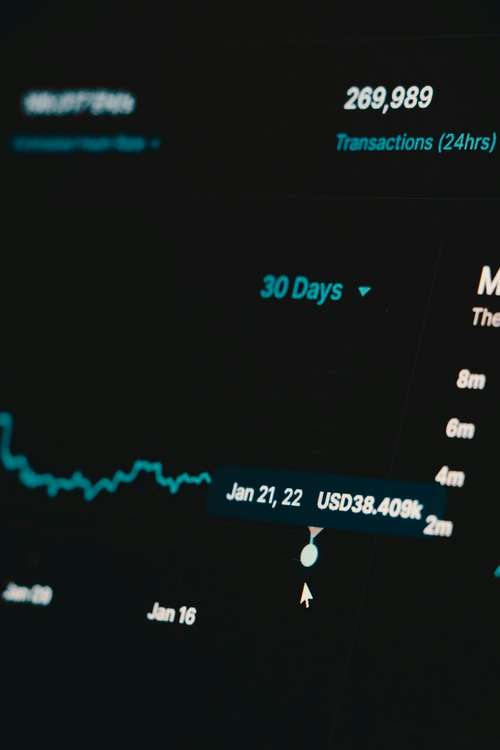
The NFT market is dead—it's a truth you should swallow now.
The once-booming market has stumbled, leaving artists wondering about the future of digital art. In the midst of the NFT market crash in 2023, artists are facing unprecedented challenges.
The once exotic digital collections that sold for insane amounts now hold no value as investors fume in confusion. A study reveals that over 18% of the top 8,850 NFT collections are now worthless, while about 41% are priced for less than $100.
However, amidst this uncertainty, some strategies can not only help artists endure but also thrive in this new development.
Connecting with Collectors: A Lifeline for Artists
In these times of uncertainty, artists can still find opportunities to not only survive but also flourish. With the emergence of new technologies for the distribution of art, it is crucial for artists to concentrate on methods that allow them to promote and sell their work in the long term, regardless of the state of the market.
According to a recent survey by Artsy, a staggering 52% of respondents said they collect art to support artists, whereas 38% said they purchase art as an investment. This statistic highlights the enduring strength of artist communities and emphasizes the importance of connecting with individual collectors.
Building Personal Connections for Long-Term Success
Building personal connections with collectors is a powerful strategy, especially regarding return on investment. When collectors feel a personal connection to an artist, they are not just buying art; they are investing in a creative journey. This emotional bond often leads to long-term support and a loyal collector base.

Successful artists like Gabe Weis, Klara, ThankyouX, and Diana Sinclair have demonstrated how fostering relationships with collectors can sustain their careers. These artists have nurtured their communities, engaging with them regularly and creating a sense of belonging that extends beyond the mere exchange of art for money.
Pillars of Artistic Success: Ownership and Community
There are a few fundamental pillars that can lead to artistic success now and in the long term. Part of the process includes artists maintaining complete ownership of their brands.
In the context of crypto, this means having their mint sites, smart contracts, and collector experiences. Brand dilution through hosting on marketplace aggregators both Impersonalize the experience of buying artwork and force the artist to be beholden to the whims of third parties.
The Power of Artist Communities
The term "community" has become somewhat overused in the Web3 ecosystem, but for artists, it boils down to a group of people who actively support and engage with their work. These individuals are enthusiastic about the artist's creations and interact with them through various social mediums.
Artists should always consider providing intrinsic value to their community before looking for extrinsic rewards. This means regularly checking in with collectors and hosting events, so they know who is active and possibly collaborating with other artists to build a bigger network of collectors.
Such communities are invaluable, providing artists with a stable foundation that shields them from the unpredictable fluctuations of any market. The reality of the current Web3 ecosystem is that traditional NFT promotional and marketing techniques no longer work in a bear market, and that means artists have to be more creative and innovative with how they promote their work and engage collectors.
This could involve creating alternative and recurring revenue streams using various tools, including free claims, paid mints, memberships, incorporation of physical items, and IRL experiences. Each artist needs to make data-driven decisions on what techniques work best for their work and constantly experiment.
Blending Data and Tradition
For instance, by integrating Google Analytics into a personal website and supplementing it with qualitative surveys on social media platforms, one can obtain comprehensive information about collector demographics, on-site behavior, and interests.
These insights can guide artists in making informed decisions about their marketing strategies, communication tactics, and content creation.

At the same time, artists should not overlook the enduring strength of traditional distribution methods. These methods, such as art galleries, exhibitions, and physical art shows, have stood the test of time and continue to provide reliability in an ever-changing art landscape.
Embracing traditional methods allows artists to adapt their work to fit formats beyond the digital, increasing the likelihood their art is accessible to a broader audience.
The method to secure these more traditional avenues often comes back to self-promotion from the artists themselves to reach a point where a gallery or exhibit would want to partner with them.
Changing Perceptions
Addressing the negative reputation associated with NFTs is also vital. While some NFT investments have been speculative, it's essential to recognize that art retains its intrinsic value beyond its digital form. Art's value lies in believing in the creator and their unique vision.
Collectors are drawn to artists they believe in, artists who connect with them on a personal level. Artists should look to convey that unique vision by giving background on their work or the specific release they're promoting, finding adjacent communities, organizing digital and in-real-life events, and showing their faces as much as possible to help create a real connection with people.
The art world is constantly evolving, and artists must adapt to these changes by embracing a combination of traditional and Web3 strategies.


